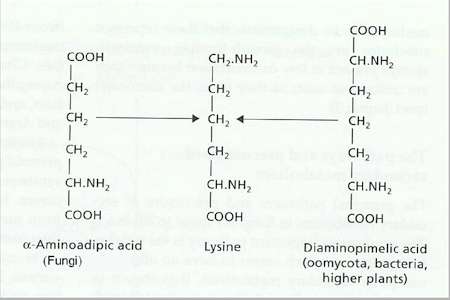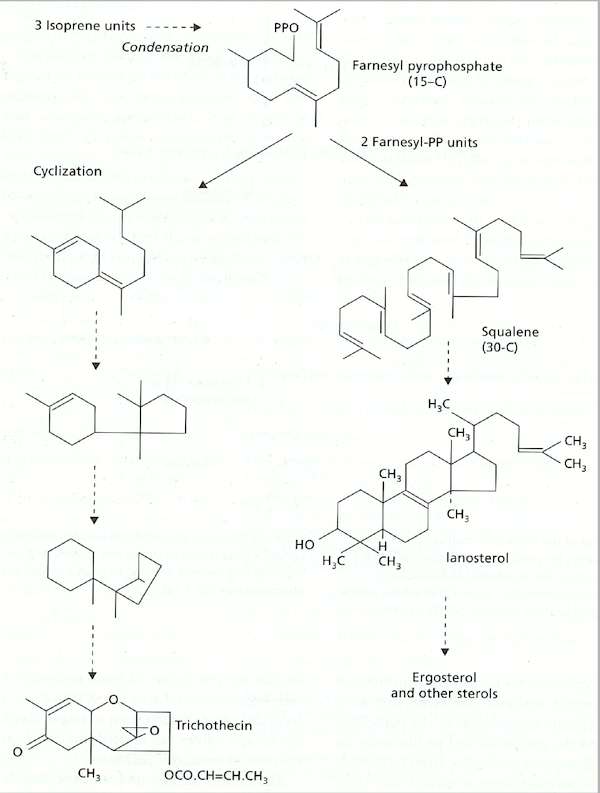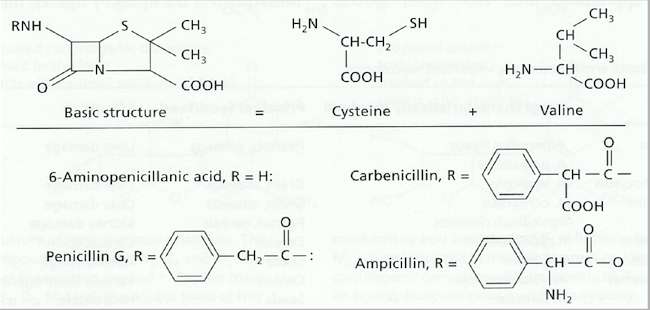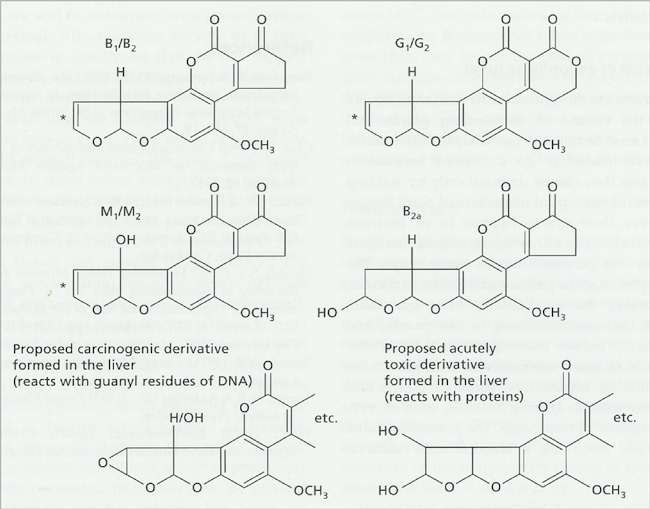..
IMAGES FROM CHAPTER 7: FUNGAL METABOLISM AND FUNGAL PRODUCTS
Fig 7.12 Structure of the amino acid lysine, and the characteristic intermediates of the two distinct lysine biosynthesis pathways.
Fig 7.13 Outline of the polyketide pathway. Various intermediates (shown in brackets) can be formed during cyclisation, leading to different end-products. Patulin is derived from 6-methylsalicylic acid. Longer ketide chains than the one shown here can produce multiple ring systems, leading to products such as the aflatoxins (see Fig. 7.19)
Fig 7.14 Pathway from acetyl-coA to the production of isoprene units
Fig 7.15 Outline of the isoprenoid pathway for synthesis of sterols, several fungal pheromones, several mycotoxins, and the cephalosporin antibiotics.
Fig 7.16 Structure of penicillins
Fig 7.17 Left: Ergots (sclerotia) of Claviceps purpurea, produced in place of the grains of a ryegrass plant (Lolium sp.). Right: longitudinal section through the small, stalked fruiting body of Claviceps, which releases ascospores from perithecia that cover the surface of the fruiting body. [© Jim Deacon]
Fig 7.18 Structure of the ergot alkaloid ergotamine, and its chemical derivative lysergic acid dimethylamide (LSD)
Fig 7.19 The structures of some common aflatoxins. The aflatoxins, produced by Aspergillus flavus (hence the name aflatoxins) and A. parasiticus, are amongst the most potent known carcinogens. They are commonly found in oil-rich crops such as peanuts (groundnuts) and cottonseed, if these crops are not properly stored. The World Health Organisation now sets strict limits on the tolerable levels of mycotoxins in food and animal feedstuffs, but the long-term effects of repeated low exposures to these chemicals remain largely unknown. [© Jim Deacon] |
|||||||||||







